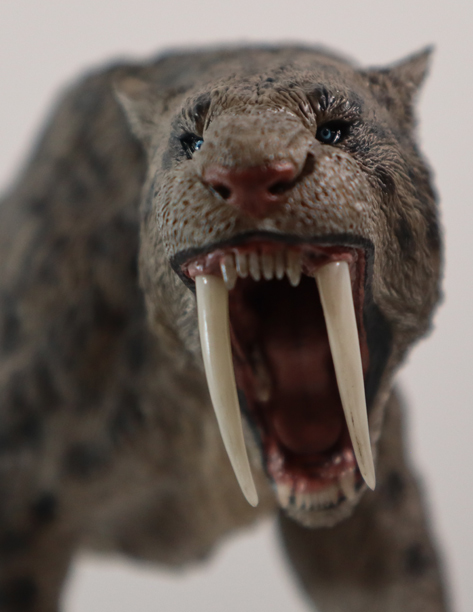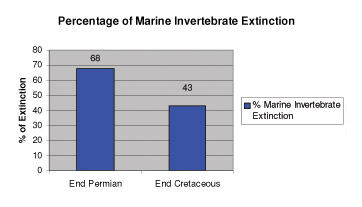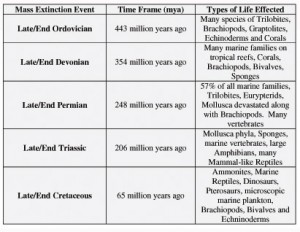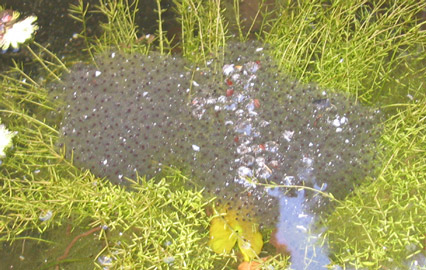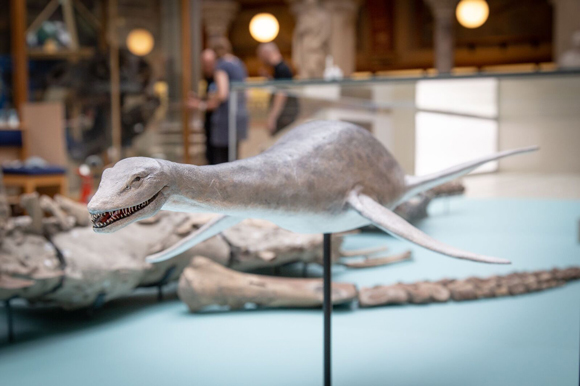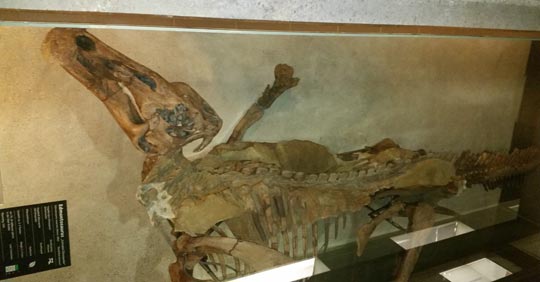Dinosaur Jawbone found on Bus in Peru
Dinosaur Jawbone found on Bus in Peru – Evidence of more Fossil Smuggling
Peruvian officials got a bit of a surprise when they opened a suspicious package that had been stored in the cargo compartment of a bus on route to Lima. Inside the well wrapped parcel they discovered the fossilised jawbone of a large prehistoric herbivore.
Dinosaur Jawbone
The fossil is part of the lower jaw (left and right dentary) and it has been tentatively ascribed to belonging to a large ceratopsian (horned dinosaur), although more work and analysis is needed to confirm the age of the fossil and to definitively place this unusual cargo within the Ornithischia. We at Everything Dinosaur strongly doubt that this fossil represents a member of the Ceratopsia, it is probably from a large mammal.
Pictures show a Peruvian police official displaying the fossil specimen at a news conference. The large grinding teeth can clearly be seen indicating a herbivorous diet but further study is required to identify the family to which this animal belonged to.
The fossil, which weighs 8.5 kilogrammes, was found in the cargo hold of the bus. The bus was on route to the Peruvian capital Lima, the fossil was in an unmarked parcel that had been sent on the bus company’s package service.
“They began to check the package because it didn’t have anything to indicate what was inside. They were worried about its weight, opened it and found the fossil,” said Kleber Jimenez, a local police officer.
Fossil Trafficking
Peru has struggled for years to combat trafficking of fossils and artifacts. Recently Yale University in the United States agreed to return thousands of pieces taken from the ancient Inca citadel of Machu Picchu to Peru. Raiding archaeological and palaeontological sites is quite common as locals try to make money out of the area’s prehistory.
“The jawbone that was found could be from a Triceratops, even though dinosaurs like that have never been found in southern Peru,” Pablo de la Vera Cruz, an archaeologist at the National University in Arequipa in southern Peru. However, this identification is only based on an examination of the police photographs, much more study is required before a more certain diagnosis can be made.
Ceratopsians such as Triceratops, Styracosaurus and Torosaurus are known from the Northern Hemisphere, the Cretaceous landscape of Laurasia. Some fossil evidence has been produced to support the theory that horned dinosaurs existed in South America, on the super-continent of Gondwana, most notably the material associated with the ceratopsian Notoceratops bonarelli but this remains controversial.
If ceratopsian fossils are found in South America then this has implications for scientist’s understanding of plate tectonics, the movement of the continents and land masses over time. It had been thought that the super-continent of Pangaea had begun to break up separating the southern continents from their northern counterparts long before the evolution of the ceratopsians. Fossils of horned dinosaurs found in South America would force geologists to reconsider the dating of the Pangaea break up.
If the fossil turns out to be ceratopsian (although, we are highly sceptical about the dinosaur fossil interpretation), then this does not confirm the existence of such animals in Peru. The fossil could have been excavated from the Western USA (the more usual home of these dinosaurs) and found its way to a collector in Peru.
Fossil in Police Custody
For the moment, the fossil is residing in police custody, given the strict rules for exporting artifacts from countries, coupled with the allegations of smuggling, the sender of the parcel may be reluctant to come forward to claim it, so it will probably remain a bit of mystery as to how such an unusual specimen came to heading to Lima in the luggage hold of a bus.
Extract taken from a report by Miguel Zegarra and Marco Aquino
The jawbone is certainly large and robust, indicating a substantial herbivorous animal. Whether it is finally identified as Ceratopsian or even belonging to a member of the Dinosauria is uncertain. After a more complete examination the fossil may turn out to be much younger than Cretaceous, perhaps belonging to one of the large Cenozoic marsupial or placental mammals known from the area.
To see a scale model of a Triceratops and other horned dinosaurs: Dinosaur and Prehistoric Animal Models.


